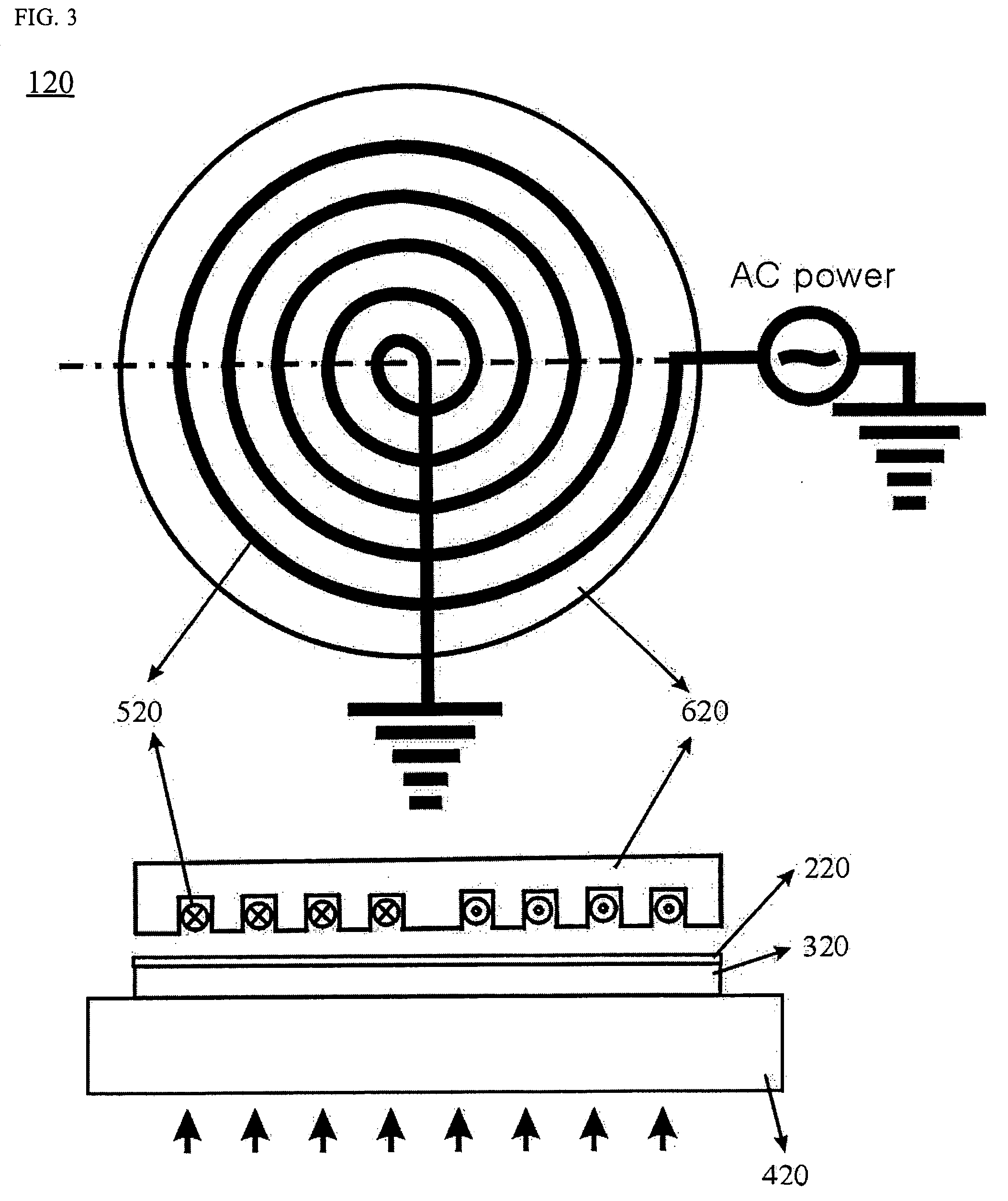Methods and apparatuses for heat treatment of semiconductor films upon thermally susceptible non-conducting substrates
a technology of non-conducting substrates and heat treatment methods, which is applied in the direction of electrical equipment, semiconductor/solid-state device manufacturing, basic electric elements, etc., can solve the problems of high thermal budgets, damage or distortion of glass, damage and/or distortion of used glass substrates, etc., to achieve the goal, improve process uniformity, and increase productivity
- Summary
- Abstract
- Description
- Claims
- Application Information
AI Technical Summary
Benefits of technology
Problems solved by technology
Method used
Image
Examples
Embodiment Construction
[0056] Referring to FIG. 1, the present embodiment relates to an apparatus allowing low temperature heat treatments of a silicon film on a glass substrate. This apparatus can be used for beat treatments of both crystallization of amorphous silicon and dopant activation of ion-implanted silicon.
[0057] Apparatus 100 consists of a graphite susceptor 400 heating the glass substrate 300 coated with the silicon film 200 and a solenoid induction coil 500 generating magnetic field (F). Introduction of alternating current in the water-cooled induction coil leads to a generation of alternating magnetic field (F). The alternating magnetic flux is utilized for two purposes. First is to heat the graphite susceptor 400 through a function of joule heating effects (i.e., heating mechanism of a conventionally used induction furnace). Second is to enhance the kinetics of heat treatments of silicon films 200 through an inducted emf inside the silicon films 200. In order to see the enhancement effects...
PUM
 Login to View More
Login to View More Abstract
Description
Claims
Application Information
 Login to View More
Login to View More - R&D
- Intellectual Property
- Life Sciences
- Materials
- Tech Scout
- Unparalleled Data Quality
- Higher Quality Content
- 60% Fewer Hallucinations
Browse by: Latest US Patents, China's latest patents, Technical Efficacy Thesaurus, Application Domain, Technology Topic, Popular Technical Reports.
© 2025 PatSnap. All rights reserved.Legal|Privacy policy|Modern Slavery Act Transparency Statement|Sitemap|About US| Contact US: help@patsnap.com



